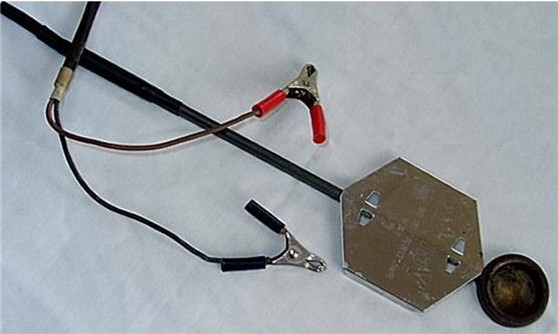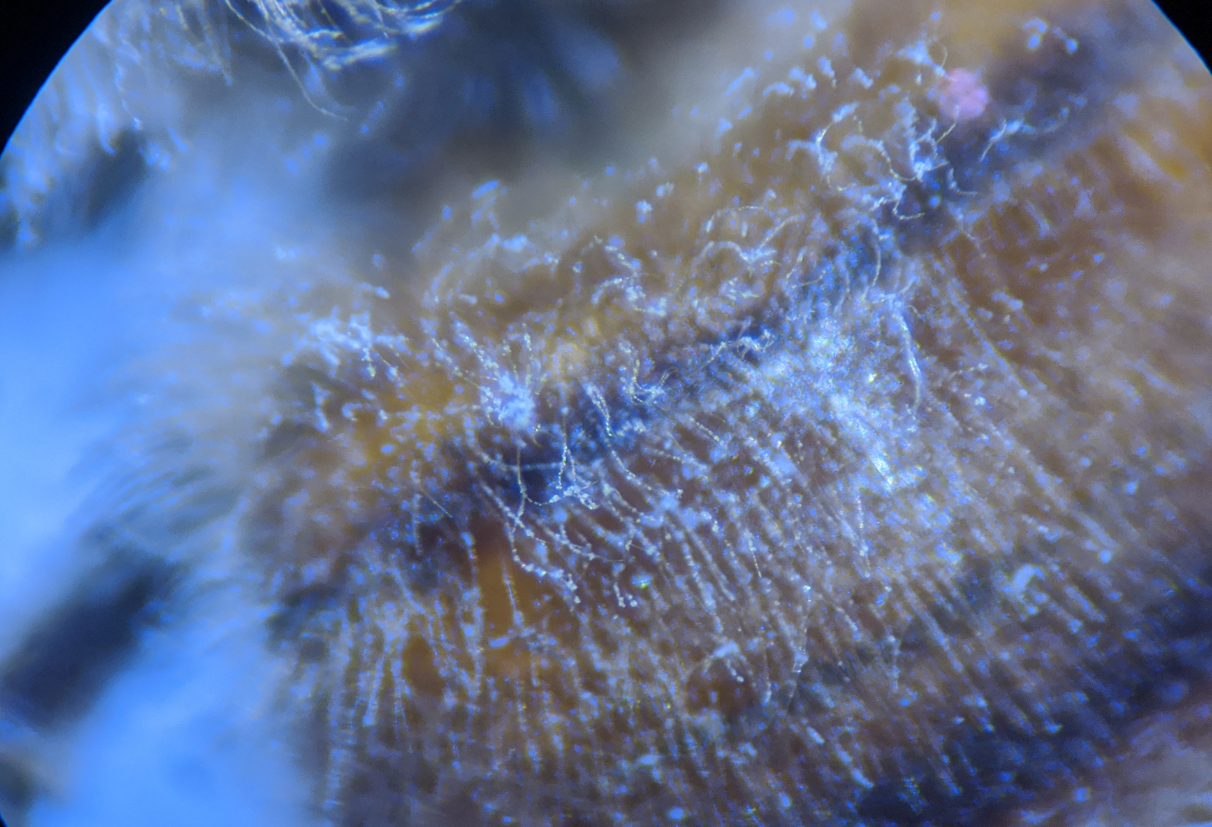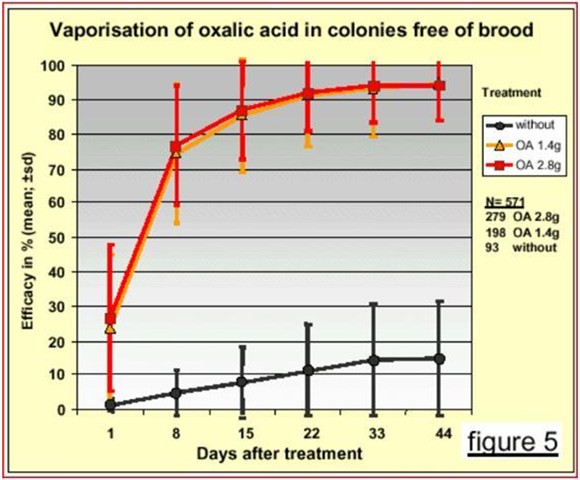Oxalic Acid: Part 2 Heat Vaporization and Other Methods
February 21, 2011
Oxalic Acid: Part 2
Heat Vaporization and Other Methods
Randy Oliver
ScientificBeekeeping.com
Originally published ABJ Jan 2007
Update December 2016: I suggest that you view my oxalic acid Powerpoint presentation, which I will try to keep up to date–https://scientificbeekeeping.com/oxalic-acid-powerpoint-presentation/
In my article last month, I detailed the use of the oxalic acid sugar syrup “dribble” for varroa control, with the consensus opinion being that the dribble method was both highly effective at killing mites in broodless colonies, as well as being safe for the beekeeper to handle.
I’ve added two additional sources of information on OA dribble at the end of this article. A study by Fries in York (2001) is of special interest: he found that the concentration of OA in the syrup is more important than the total amount of OA applied to a colony. That is, twice the dosage of a half-strength solution does not result in the same mite kill! It’s the actual concentration of OA in the syrup that is critical. For ease of measurement, remember this proportion: 35g oxalic acid dissolved into 1 liter of 50:50 sugar syrup.
I’ve recently returned from a conference at which I was able to speak with Marion Ellis and Medhat Nasr, the U.S. and Canadian experts on OA. Medhat has impressively extensive experience and data regarding the uses of oxalic (and formic) acid. They both caution against using garden sprayers for application, due to irregular dosing as the pressure changes, and suggest using a calibrated syringe or other applicator to ensure accuracy. However, I have personally seen beekeepers use garden sprayers with consistency. Marion says that OA is definitely on the track for registration in the U.S., to be sold in premeasured packets to be sold by the American Beekeeping Federation. Purchasing your acid in this manner will both be legal, and help the ABF to defray the cost of registration.
Although the dribble method of application is nearly universally (except in the U.S.) recommended, there are also other ways in which oxalic acid may be applied:
1. Kitchen recipes and backyard tinkering with shop towels, etc.
2. Heat vaporized within the beehive.
Author’s note: Oxalic acid is not legally approved for mite control in the U.S. The author does not promote its use as such in any unapproved manner.
Cellulose strips, e.g., shop towels
Marinelli, et al. (2006) tried two paper strips, each containing 1.3 g of OA, inserted between the frames of colonies and replaced 2 weeks later; after another 2 weeks, colonies were checked for mite level. There was almost no effect.
The Europeans have tinkered with oxalic acid quite a bit; the dribble method is hard to beat! I question whether it would be worth one’s time to mess with kitchen recipes and shop towels.
Heat vaporization
There are two problems associated with OA dribble: (1) it requires opening the colonies for the fall/winter treatment, and (2) there are issues of bee toxicity and depressed broodrearing due to bees ingesting some of the syrup. Both these issues can be circumvented by applying the acid in vapor form. Some chemicals used in beekeeping, such as thymol, menthol, PDB mothballs, and formic acid readily evaporate or vaporize at room temperature. Oxalic acid, on the other hand, requires high heat to vaporize. Once vaporized, though, OA can disperse throughout the colony, and then recrystallize into a fog of tiny crystals that attach to all surfaces (wood, comb, bees’ bodies, etc.). This vapor dispersion has the advantages of exposing the majority of phoretic mites to the tiny crystals, and there is no incentive for the bees to ingest it, since it is not mixed in sugar syrup, thereby minimizing any toxic effects it may have on the bees.
Vaporizers for OA come in two types: passive, which heat the crystals inside the hive with a 12-volt heating pan, or active, which heat the OA outside the hive, and blow it into the boxes. The range of efficacy of the various models varies, likely due to either the efficiency at vaporization, or dispersion into the cluster of bees. The passive models are inherently safer, since no vapors are blown outside the hive.
To use a 12-volt passive vaporizer, the beekeeper measures oxalic acid crystals (from 1-3 grams) into the cooled vaporizer, shoves the device into the entrance, seals the hive entrance up with foam or rags, then energizes the vaporizer with a power cord from the truck battery. The device quickly heats and vaporizes the OA. After about 3 minutes, the now-empty unit is removed, and recharged with crystals for the next hive. Several units are generally run simultaneously, and in rotation.

This is the Varrox® 12-volt oxalic vaporizer produced in Switzerland. It heats the acid to sublimation temperature under the cluster of bees. This is considered a “passive” vaporizer.
Update Sept 2016: The above vaporizer, although quite simple, in a recent study [Toufailia 2015], gave efficacy equal to that of the dribble (trickle) at the 2.25 g dose per hive, and better efficacy than the dribble at lower dosage rates. There are a number of new vaporizers on the market, none of which I’ve tested.
At near-freezing temperatures, the passive units may not get the vapors to penetrate the cluster, so active units were developed. Some use 12-volt current and a fan, and some propane, to force the fumes into the cluster. Again, some fog does blow out of the hive, so the beekeeper must exercise extra caution not to be exposed to it. One critical aspect of both types of vaporizers is that the colonies must be tightly sealed in order to keep the vapor inside, since vapor that escapes obviously does not work to kill mites.
Update 2009: Dr Medhat Nasr has developed a fan-forced vaporizer that uses oxalic acid “pills” that are easy to handle, and that give exactly the right dose. The design is an improvement over the Varrox, since it does not overheat the acid (and thus cause degradation), and the stream of warm air causes the cluster to open up so that the vapor can penetrate. It is manufactured in Alberta, Canada by Cor Dewitt (780 986 8582).

Cowen Manufacturing also produces a vaporizer based upon Medhat’s design.. This drawing is from their website www.cowenmfg.com/pages.asp?pageid=77541.
Heilyser Technology Ltd. in British Columbia, Canada also makes two types of vaporizers. See http://www.heilysertechnology.com/vaporizer.html
How does oxalic vaporization work? In the CRC Handbook of Chemistry and Physics we find that upon heating oxalic acid, the water of hydration boils off first, then at 315°F the oxalic acid starts to sublime (go directly from solid to vapor), and finally at 372°F any oxalic acid which has not yet sublimed decomposes to initially to formic acid and carbon dioxide, and then to CO2, carbon monoxide, and water). One of the problems with some vaporizers is that they get too hot too quickly and decompose, rather than evaporate the acid.
Update: When OA dihydrate is placed in a “sublimator” it first melts to the liquid state, then at 100C the water boils off, then the OA begins to sublime at around 150-160C. But once the temp reaches 190C, any remaining OA degrades to carbon dioxide and water (some formic acid may temporarily be created, but I can’t detect it by smell in trapped cooled vapor).
During application, the warm fog of tiny crystals (it’s no longer vapor shortly after leaving the vaporizer) rises within the confines of the hive bodies, and grow on surfaces inside the hive, including on the setae of at least some bees:

Crystals of formic acid on the abdominal setae (hairs) of a bee after vaporization. This bee received a much stronger dose than do those in the center of the cluster. .
The advantages of vaporization are:
1. There appears to be less toxicity to both adult bees and brood.
2. One needn’t unwrap nor break open the colonies during cold weather.
3. It can be done midwinter in near freezing temperatures without disturbing the cluster too much.
The disadvantages are:
1. Obviously, the beekeeper is exposed to much more chance of coming in contact with the crystals, since they must be measured each dose. However, a European company is developing a gelatin cap containing a premeasured dose of OA, which can be placed unopened into the vaporizer. Unfortunately, the burning gelatin smells bad. Medhat Nasr has developed OA tablets which can be handled with gloved hands.
2. The vapor is highly harmful to your eyes, nose, and lungs, and exposes the beekeeper to significantly more risk of serious injury than the dribble method does.
Just how dangerous is vaporized oxalic acid?
Airborne Exposure Limit, oxalic acid: 2 mg/m3 (STEL). The usual vaporized dose per colony is 2 grams. If half that amount actually vaporized, it could put 500 cubic meters of air (volume of a 2000 sq. ft. house) above the Threshold Limit Value for a 15-minute exposure! The same value for formic acid is 18.8 mg/m3—which means that vaporized oxalic is nine times as deadly at the same concentration. I vaporized a bit out back, then walked downwind and took a whiff from the cloud. I’ll tell you, it’s not something you want to inhale—I nearly coughed my guts out!
However, oxalic vaporization is fairly widely used throughout the world, so I thought that maybe I was being too cautious. Manufacturers of vaporizers claim, of course, that vaporizers are safe to operate. German researchers, Gumpp, et al. (2003), state that “By appropriate use there is no risk to the health of the apiarist.” Their feeling was that the OA vapor quickly recondenses into an aerosol of tiny crystals, which are less dangerous than a vapor. They suggest wearing safety goggles, acid proof gloves, and a disposable cloth dust/mist mask equivalent to NIOSH N95 (“N95” will be stamped on the front—they cost anywhere from $12-$36 from Conney.com).
Dave Cushman in England says: “Some are concerned about Oxalic acid vaporisation producing a great deal of toxic vapour, but the point of the treatment is that the oxalic acid re-condenses within the hive very rapidly and coats everything in sight. Leakage will occur, but it will be a minor amount and the fine crystals will fall out of suspension fairly rapidly. If due notice is taken of sealing up the hive and prevailing wind direction, there should be very little exposure to the operative.” In my test at home, though, I watched the cloud of OA fog float away on the wind and over the trees!
Other users point out that most vaporizers are shoved into the entrance and the hive is sealed. No pressure is created in the hive, and the point is for the fog of crystals to condense inside the sealed hive. They claim that they don’t get blasted; I question the risk involved when bending over and pulling the unit out, should the wind change. In response, they say that if you were to inhale the fog, you would immediately go into a coughing fit, and stop inhaling before you hurt yourself. That observation makes me feel way more comfortable!
The other question I have is about the liability of any manufacturer who sells the units if someone were to be injured. See this news item, dateline August 24, 2001:
EPA To Seek Penalties From Pesticide Company. EPA’s New England office announced that it intends to seek monetary penalties against a corporation for selling unregistered and improperly labeled pesticides and pesticide devices. The proposed penalty in this administrative complaint against the Mansfield, Mass.-based company is $209,000. <http://www.epa.gov/region01/pr/2001/aug/010825.html>
Efficacy of Vaporization
Radetzki found that mite kill takes place in the first week, and tapers off for the next two weeks. One manufacturer claims: “Without brood one vaporizer treatment is more than 95% effective (note: this is not much better than a good OA dribble) and with a follow up treatment, your bees should be almost mite free.” Some Europeans use it regularly during the summer. Sounds to me like a strategy to develop oxalic-resistant mites…

This graph summarizes the results of field trials of the Varrox® vaporizer. Ninety-five apiarists in seven European countries participated, counting a total of 797,744 mites from 1,509 colonies! The efficacy of two amounts of oxalic vapor were compared to Amitraz (Taktic) and Perizin (coumaphos). Graph from Thomas Radetzki.
Does vaporization hurt the bees?
Radetzki didn’t note increased bee mortality after winter treatment. Heinz Kaemmerer of Heilyser Technology Ltd. says: “We treated several colonies for 3 months during winter, once a week with the vaporizer and all colonies survived.” “With brood, colonies can be treated with the right amount of OA 3 to 4 times, a week apart; there is no harm to bees, queen or brood.” Medhat Nasr confirms that vaporized oxalic is very gentle to the bees.
Conclusion
I’ve presented the facts about oxalic acid, and will let you draw your own conclusions. The dribble method, used once during the broodless period, has been demonstrated to be effective and safe, although it may somewhat suppress colony buildup in early spring. It is legal, and recommended, in most countries, and will “soon” be registered for use in the U.S. Heat vaporization, on the other hand, has some advantages for winter treatment in cold climates, but the question of operator safety lingers. It faces that significant hurdle in order to be approved by the EPA (I wouldn’t hold my breath)(pun intended).
Discussions
Vaporization thread: http://www.beesource.com/ubb/Forum2/HTML/000468-4.html
Gumpp, et al. 2003 Evaporation of oxalic acid—a safe method for the user? http://www.alp.admin.ch/themen/00502/00515/00519/index.html?lang=en Link broken
Citations
Hasan Al Toufailia, Luciano Scandian & Francis L W Ratnieks (2015) Towards integrated control of varroa: 2)comparing application methods and doses of oxalic acid on the mortality of phoretic Varroa destructor mites and their honey bee hosts, Journal of Apicultural Research, 54:2, 108-120, DOI: 10.1080/00218839.2015.1106777
Danish study of vaporization: www.mellifera.de/engl2.htm
Marinelli E., Formato G., Vari G., De Pace F.M. 2006 VARROA CONTROL USING CELLULOSE STRIPS SOAKED IN OXALIC ACID WATER SOLUTION Apiacta Vol 2006
Radetzki, Thomas. Vaporization of oxalic acid and working safety www.mellifera.de/Engli2.pdf
Radetzki, Thomas. Vaporisation of oxalic acid in a field trial with 1’509 colonies http://www.mellifera.de/engl2.htm
Additional OA dribble references:
York 2001.www.alp.admin.ch/themen/00502/00567/00573/00574/index.html?lang=en
Rademacher and Harz (2006) Effectiveness of Oxalic Acid for Controlling the Varroa Mite. ABJ 146(7): 614-617. (Excellent review of the literature)




